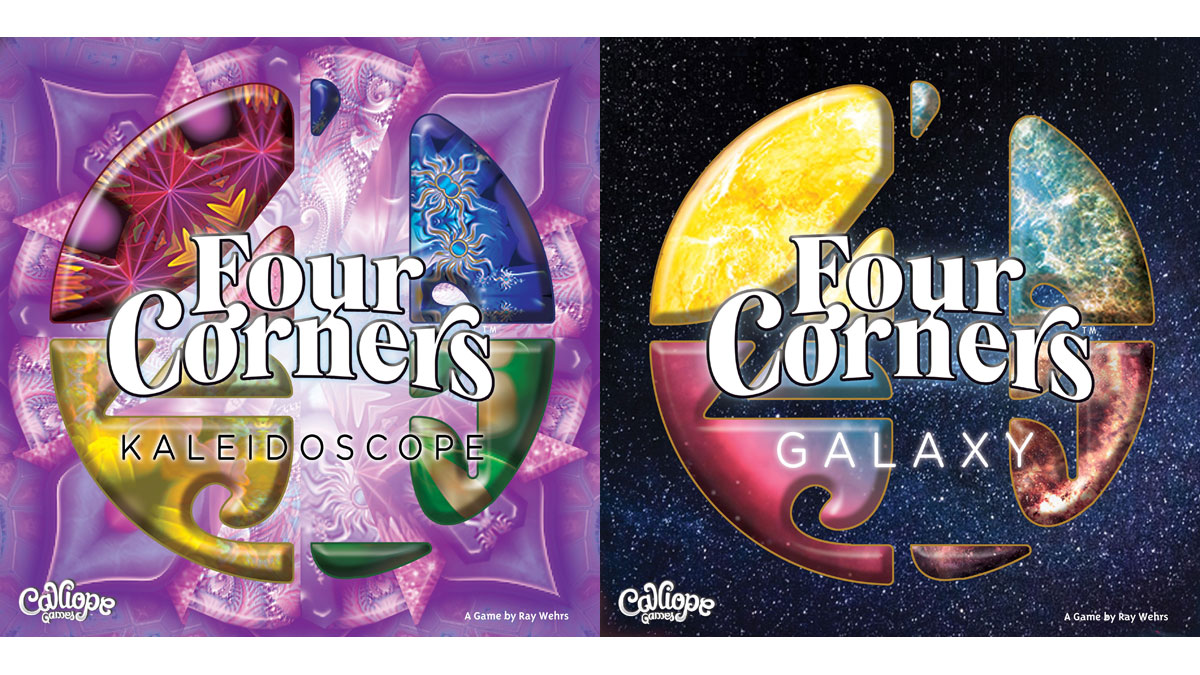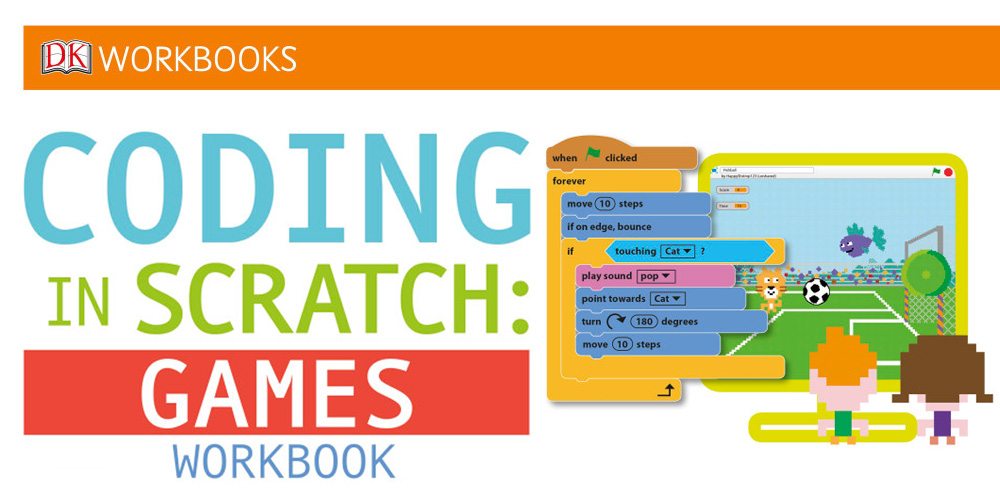Place, rotate, and swap tiles to connect corners to complete your goals!
What Is Four Corners?
Four Corners is a game for 1 to 6 players, ages 8 and up, and takes about 20 to 40 minutes to play. It’s currently seeking funding on Kickstarter, with a pledge level of $32 for a copy of the game, or $60 to get both versions of the art.
Four Corners was designed by Ray Wehrs and published by Calliope Games, with art and graphic design by Andy Hepworth, Lazarus Chernik, Peggi Wolfe, and Jonathan Warobick.
New to Kickstarter? Check out our crowdfunding primer.

Four Corners Components
Note: My review is based on a prototype copy, so it is subject to change and may not reflect final component quality.
Here’s what comes in the box:
- 4-piece tile tray
- 35 Goal cards
- 78 Tiles
There are two versions of the game, Kaleidoscope and Galaxy, which only differ in appearance but have the same gameplay. Kaleidoscope has purple plastic trays and fractal starburst images inspired by its namesake. Galaxy, the version I was sent, uses black trays and features images of stars and nebulae and spiral galaxies.
The plastic trays were used previously in another Calliope Games title, Tsuro: Phoenix Rising: the four pieces snap together to form a 6×6 grid that holds the square tiles, and the circular bumps under each tile allow you to easily depress one corner to pick up a tile without disturbing its neighbors. Since the game often involves rotating or moving tiles, the tray makes that a whole lot easier. Ray Wehrs told me that the trays were actually designed for Four Corners originally, but Tsuro: Phoenix Rising ended up being published first.
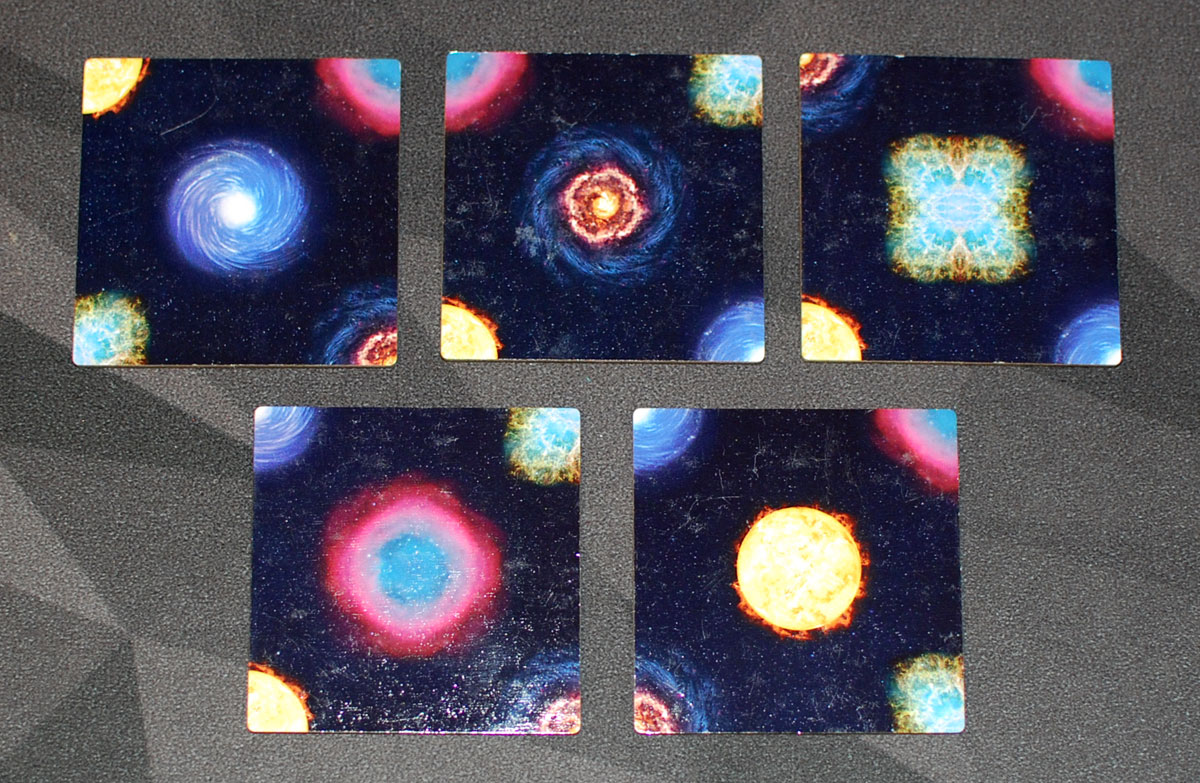
There are five different images in the game—each tile has one printed in the center of the tile, and then sections of the other four at the corners. (There are also a few tiles that have actions on them instead of the images.) Galaxy calls the center images “galaxies” and the corner pieces “constellations,” which feels inaccurate, but that’s their terminology so I’ll use it for this review.
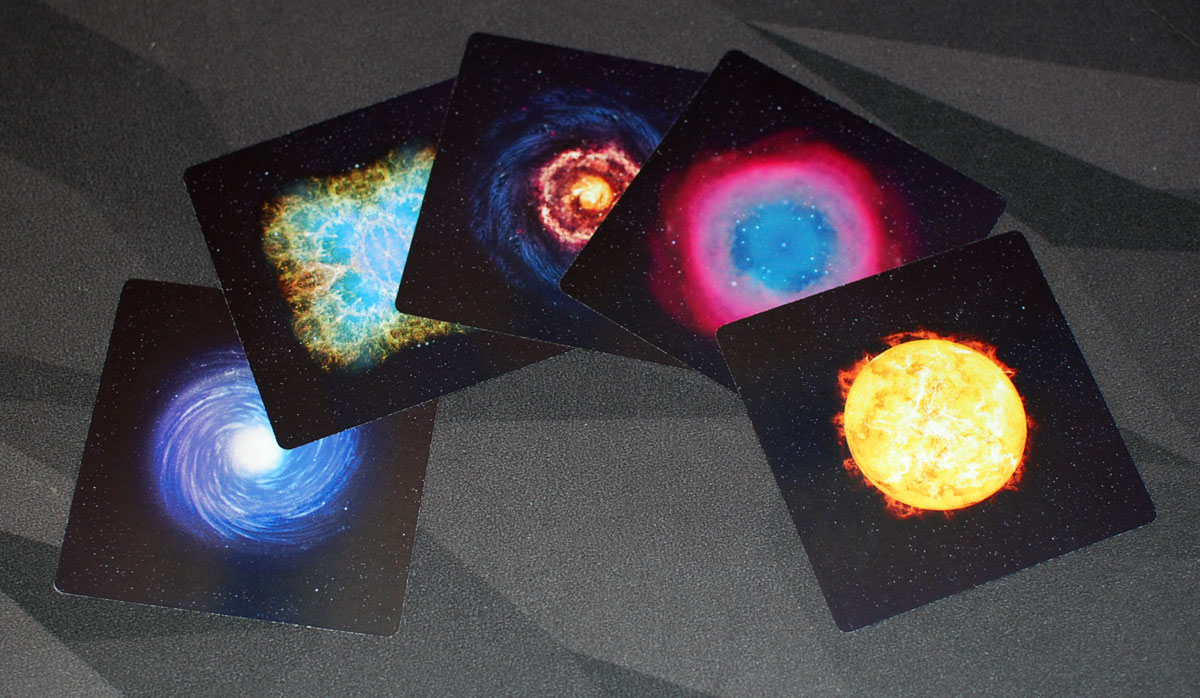
The goal cards each depict one of the five images; the cards are large square cards, maybe a little bigger than they need to be considering that there’s only one piece of information on them.
How to Play Four Corners
You can download a draft of the rulebook here. You can also try it on Tabletop Simulator.
The Goal
The goal of the game is to be the first to achieve three goals.
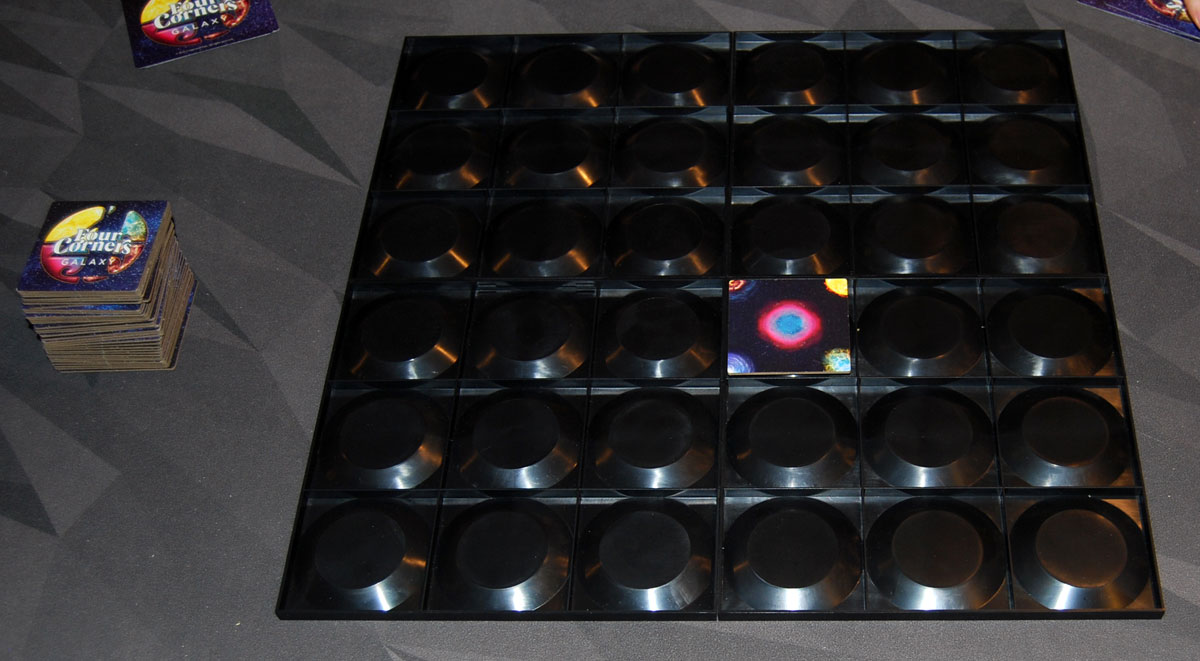
Setup
Assemble the tray and place it in the center, and place one random tile (with an image, not an action) in one of the four center spaces. Give each player three random goal cards, and three random tiles, all kept secret from other players.
In the Galaxy edition, the player who most recently looked through a telescope goes first. (In the Kaleidoscope version it’s whoever played with a kaleidoscope most recently.)
Gameplay
On your turn, you have three options: play a tile from your hand, manipulate two tiles, or draw a new goal card.

Play a puzzle tile
If you play a puzzle tile (with an image on it), you must place it so that it’s next to a tile that’s already on the board. The tile must match galaxies with an adjacent tile, or else it must connect at least one constellation with an adjacent tile. (Note that you don’t have to connect all of the constellations to existing tiles.)
After playing a tile, draw back up to 3 tiles in your hand.

Manipulate two tiles
You have two options to manipulate tiles instead of playing a puzzle tile:
- Choose two tiles on the board and rotate them each 90 degrees in either direction. If you have a 180-degree rotation tile, you may discard it to make one of the rotations 180 degrees instead.
- Choose two tiles and swap their positions, keeping their orientations the same. Both tiles must be legal to place in their new positions. If you have a double-swap tile, you may discard it to make a second swap.
(In either case, if you play an action tile, draw back up to 3 tiles at the end of your turn.)
Draw new goal
Draw a new goal card from the deck, and then discard one from your hand.
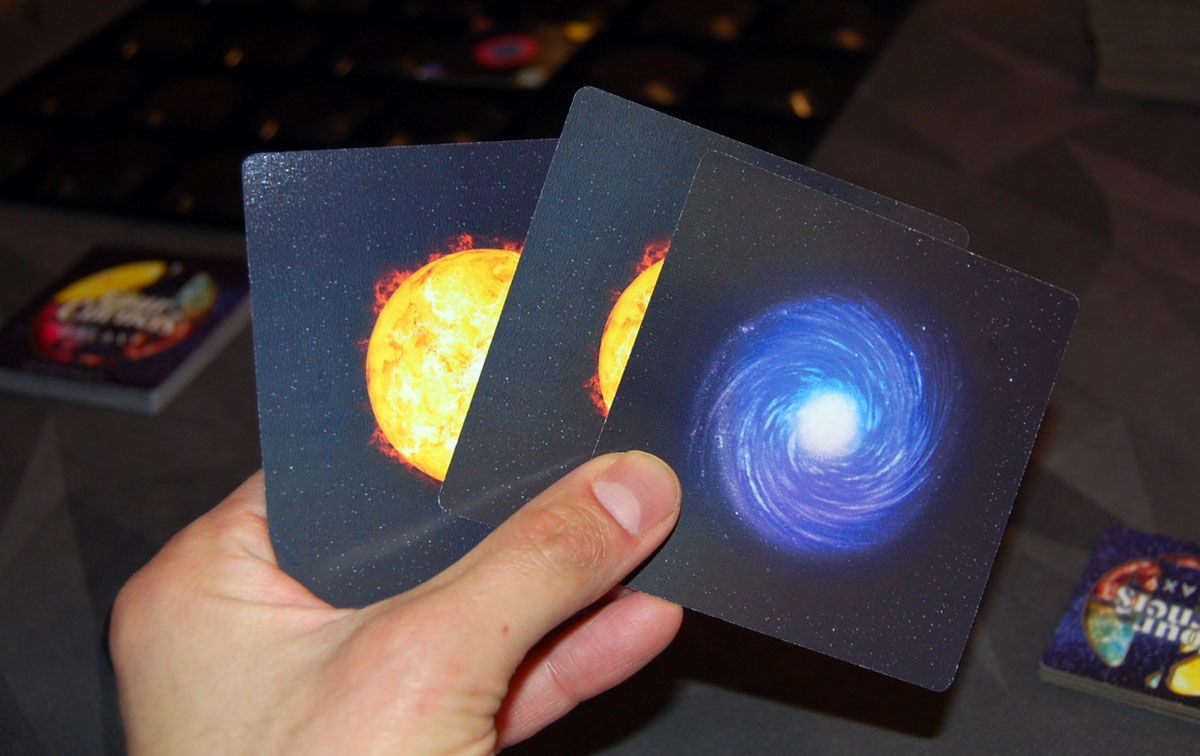
Complete a goal
After playing a tile, you check if you have scored a goal card. There are two ways to score a goal: assemble one full galaxy from four matching constellation corners, or make a line of four matching galaxies in a row (orthogonally or diagonally). Play your goal card face-up in front of you. (Do not draw a new goal card—you simply have fewer goal cards in your hand now.)

Then, you must manipulate the tiles. If you created a four-corners galaxy, you must rotate all four of the tiles that made up your goal, and none of them may be turned to a position they’ve already had during your turn. It’s possible that this could complete another goal, in which case you score again.

If you created a sequence galaxy, then you must draw tiles and replace two of the tiles in the sequence—for these two, you may not rotate the tile once it’s revealed and must play it as it’s oriented. (If you draw the same galaxy as the one you just completed, discard and draw a new one—the new tiles must break up the sequence.) It’s possible for you to complete and score another goal by doing so.
If you have duplicate goal cards, you only score one of them each time you form a four corners galaxy or sequence—you’ll have to assemble another galaxy or sequence to score the next one.
Also note that you are not allowed to complete a four corners galaxy or a sequence galaxy if you don’t have that goal card in hand.
Game End
The game ends when any player has scored their third goal and wins.
Variants
There are two variants: a team variant where partners share a set of 3 goal cards and either teammate can score, but no other communication is allowed. There’s also a solo mode that uses just a 3×3 grid (so the sequence galaxy only requires 3 in a row). When you place a tile, you may place it in an empty spot or replace an existing tile. The goal is to complete 10 goal cards before you run out of tiles.
Why You Should Play Four Corners
Four Corners is a quick-to-learn puzzle game that feels a bit like playing Connect 4 but with a constantly changing board. In order to complete a four-in-a-row goal, there usually needs to be three already in a row somewhere so that you can either place the fourth tile or swap it into place on your turn. But unlike Connect 4, where you each have your own color and your opponent cannot create your three-in-a-row setup, in Four Corners it’s quite possible that you have the same goal card as somebody else. That means setting up your three-in-a-row is quite risky because somebody else might complete the goal before you.
The four-corners goal can be a little less obvious, and I felt it was usually more likely that my opponents would leave an opportunity for me to rotate a few tiles and complete a goal. When you’re placing new tiles, the four-in-a-row is very easy to spot, but since you can rotate two tiles on your turn, checking every possibility for those can be more difficult.
If you’ve played the classic pen-and-paper game Dots and Boxes, where you get to score if you complete a box, you know that you’re basically always trying to find a place to draw a line that does not form a “U” shape, because that gives your opponent a box. You can feel the same way playing Four Corners, where you’re looking for a place to put your tile that won’t give your opponent a scoring opportunity—and yet at the same time somehow set up for your own goal… which might be the same thing.
That’s the part that can feel a little frustrating: if the player before me has the same goal, then it means that if anyone else sets it up, they’ll score it and then rearrange things before my turn. My only hope at that point is that they set it up themselves, and then I get to score. If you have multiple cards of the same goal, you can also feel stuck because you’ll need to somehow make it happen multiple times. While you can draw and replace goals, it takes your entire turn, so it feels like the last option you want to take.
And then there are the two special action tiles. There aren’t very many of them in the stack, so they can come as a surprise when somebody uses one. Since most of the time you’re trying to keep other players from being one turn away from scoring any particular goal, these tiles are basically a boost that can give you an edge on completing a goal when the circumstances are just right. The 180-degree tile is good for completing a four-corners galaxy, and the double-swap can be used to complete either type of goal. Just the fact that these action tiles are in the stack meant that we started paying attention to the orientation of new tiles: is there one of each orientation of this particular constellation? If so, that could allow for a double-swap to complete the four corners galaxy.
I did not get a chance to try the team game or the solo game, unfortunately, so I can’t comment on those, but designer Ray Wehrs told me that the team mode has become his favorite way to play. I played with 2 to 4 players, and I feel like I enjoyed it more with 3 or 4 than with just 2, just because I liked the extra bit of chaos that introduces. In terms of strategy, it’s on the lighter end of what I tend to prefer, but it did offer some challenges in considering my moves each turn. While I think Tsuro is still my favorite of Calliope’s puzzly tile-laying games, Four Corners certainly fits their line-up of casual games: easy to learn, quick to play, and family-friendly so you can play it with both your kids and your parents.
For more information or to make a pledge, visit the Four Corners Kickstarter page!
Click here to see all our tabletop game reviews.
![]() To subscribe to GeekDad’s tabletop gaming coverage, please copy this link and add it to your RSS reader.
To subscribe to GeekDad’s tabletop gaming coverage, please copy this link and add it to your RSS reader.
Disclosure: GeekDad received a copy of this game for review purposes.
